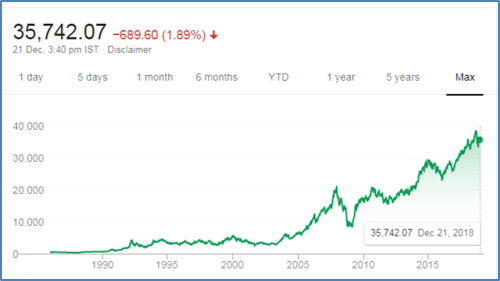A large part of our belief system is based on how we are conditioned since childhood. I come from a time when most grand – mothers around me were quintessential homemakers. They were entrusted with the responsibility of taking care of the home, family and kids, while the men in the family were solely and fully responsible for making “money” decisions.
Our mothers (mostly) grew up and thereafter lived in an environment where “finances” continued to be a male dominated subject. The only money related involvement that most home maker mothers have had is with respect to the monthly petty cash they handle. While it seems like a rather tiny part of family finances, most mothers have again demonstrated a great amount of adeptness at that. If you have not given this a thought, it is time you go back and ask your mother how she planned her monthly “kharcha” and “bachat”. In most cases, she will also map out her savings to the various deployment needs that she had well planned for in advance.
Why then is “money” still a male dominated domain? I have been interacting with people, both men and women through various online platforms. The level of participation that I witness from the female community is shamefully low as far as India is concerned.
Do women refrain from taking an active role in personal finance? Or have they been unintentionally not involved enough by the male community? My view is, partly both.
This fact has remained this way for decades now. Yet the existence of this fact is far more dangerous now than ever before. A couple of situations that I iterate below are reasons why women need to prioritize their involvement in decisions around personal finance:
- The absolute number of women in the Indian workforce has been increasing. Handling the monthly petty cash is not the only money they need to manage.
- Working women tend to work for lesser number of years as compared to their male counterparts. This is on account of maternity and family priorities. This means that their quantum of savings could to be lower than their male counterparts. However, that does not reduce the money they will need to fund their own retirement.
- Women usually have a life expectancy greater than that of men. So they need to plan for longer number of retirement years.
- A lot more women are becoming socially independent. This results in a difference in priorities and preferences even between married couples. Financial planning of the family therefore needs the wife to be as involved as the husband.
- When young, we generally do not foresee unfortunate situations in life. A women who is suddenly divorced or widowed could end up in an extremely struggling situation, if she has no involvement in family finances
And these are just some of the many reasons. Times are indeed changing and we do have a few female clients who play a very active role in financial decision making (Read more here). However, they are still a very few. It is time that men and women assume equal responsibility to play a more inclusive role in defining the individual and collective goals, manage cash flows and draft out an implementable financial plan.
CAGR For Her is an initiative aimed at bringing more women into main stream decision making around personal finance. It is about mentoring, coaching and guiding women to play a more inclusive role in financial planning for the family. My aim is to simplify complexities and talk personal finance in a language that is relevant for today’s women.
In case you wish to have a chat, contact me on the below coordinates:
Email: shruti.agrawal@cagrfunds.com
Phone: +91 98670 954324


